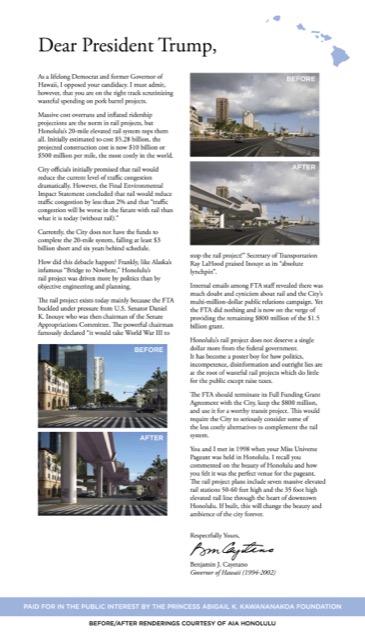The Honolulu Authority for Ridiculously-expensive Transit (HART) has submitted a recovery plan to the Federal Transit Administration seeking to release $1 billion in federal funds for the project. You know you are in trouble when you have to write a recovery plan for a project that isn’t even half built. Billions of dollars of cost overruns had led the FTA to question whether HART could even finish the rail line, much less operate it, and this plan seeks to answer those doubts.
The 20-mile rail line was originally projected to cost less than $3 billion, but now even HART admits that it will cost $8.2 billion ($9.0 billion including finance charges). For perspective, that’s considerably more than the projected cost of Denver’s 110-mile FasTracks program–a program that many think will never be completed because Denver Regional Transit District lacks the funds to extend one of the lines to Longmont. The Denver-Boulder area has more than three times as many people as the Honolulu urban area, so the per capita cost of Honolulu rail is several times greater.
To cover the cost overruns, Hawaii’s governor called a special session of the legislature. After rancorous debate, the legislature agreed to raise a variety of taxes to help fund the rail line. Most importantly, if you stay in a hotel in Hawaii–even if it is in Kaui, Maui, or the big island and you never visit Oahu–about 1 percent of your hotel cost will go to support the rail line, which is another good reason to try Airbnb. Continue reading








